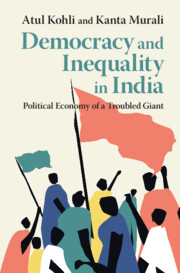Refine search
Actions for selected content:
776 results
Chapter 12 - Children’s and Neurodevelopmental Aspects of Mental Health
- from Section 3 - Contemporary Applications
-
-
- Book:
- Research Methods in Mental Health
- Published online:
- 31 October 2025
- Print publication:
- 20 November 2025, pp 201-215
-
- Chapter
- Export citation

In Defense of Economic and Social Human Rights
- An Intellectual History, 1940 to the Present
-
- Published online:
- 06 November 2025
- Print publication:
- 20 November 2025
Vulnerability to and acceptability of different types of sludge
-
- Journal:
- Behavioural Public Policy , First View
- Published online by Cambridge University Press:
- 03 November 2025, pp. 1-30
-
- Article
-
- You have access
- Open access
- HTML
- Export citation

Self-Made
- The Stories That Forged an American Myth
-
- Published online:
- 30 October 2025
- Print publication:
- 30 October 2025
Introduction
-
- Book:
- Self-Made
- Published online:
- 30 October 2025
- Print publication:
- 30 October 2025, pp 1-9
-
- Chapter
- Export citation
1 - Democracy and Governance
- from Part I - Politics at the Apex
-
- Book:
- Democracy and Inequality in India
- Published online:
- 11 October 2025
- Print publication:
- 30 October 2025, pp 15-63
-
- Chapter
- Export citation
9 - Stories Against the New Deal
-
- Book:
- Self-Made
- Published online:
- 30 October 2025
- Print publication:
- 30 October 2025, pp 206-227
-
- Chapter
- Export citation
Introduction
-
- Book:
- Democracy and Inequality in India
- Published online:
- 11 October 2025
- Print publication:
- 30 October 2025, pp 1-12
-
- Chapter
- Export citation
10 - Targeting the Common Good, 1950–2000
-
- Book:
- Self-Made
- Published online:
- 30 October 2025
- Print publication:
- 30 October 2025, pp 228-250
-
- Chapter
- Export citation
2 - Politics of Growth and Distribution
- from Part I - Politics at the Apex
-
- Book:
- Democracy and Inequality in India
- Published online:
- 11 October 2025
- Print publication:
- 30 October 2025, pp 64-92
-
- Chapter
- Export citation
11 - The Myth’s Twenty-First-Century Victories
-
- Book:
- Self-Made
- Published online:
- 30 October 2025
- Print publication:
- 30 October 2025, pp 251-275
-
- Chapter
- Export citation
Does weather affect local economic growth? Evidence from the world’s most natural disaster-prone country
-
- Journal:
- Environment and Development Economics , First View
- Published online by Cambridge University Press:
- 28 October 2025, pp. 1-28
-
- Article
- Export citation
9 - Diversity, power and knowledge
-
- Book:
- Engaging with Social Work
- Published online:
- 09 October 2025
- Print publication:
- 23 October 2025, pp 266-305
-
- Chapter
- Export citation
Transformative just transition as redistribution of income and wealth
-
- Journal:
- The Economic and Labour Relations Review ,
- Published online by Cambridge University Press:
- 20 October 2025, pp. 1-15
-
- Article
-
- You have access
- Open access
- HTML
- Export citation
3 - The Progressive Case against Antimonopolism
-
-
- Book:
- Toward an Inframarginal Revolution
- Published online:
- 26 September 2025
- Print publication:
- 16 October 2025, pp 45-99
-
- Chapter
- Export citation
8 - Self-Colonization in American Law
-
-
- Book:
- Toward an Inframarginal Revolution
- Published online:
- 26 September 2025
- Print publication:
- 16 October 2025, pp 231-297
-
- Chapter
- Export citation
Pollution versus inequality: tradeoffs for fiscal policy
-
- Journal:
- Macroeconomic Dynamics / Volume 29 / 2025
- Published online by Cambridge University Press:
- 15 October 2025, e150
-
- Article
-
- You have access
- Open access
- HTML
- Export citation

Democracy and Inequality in India
- Political Economy of a Troubled Giant
-
- Published online:
- 11 October 2025
- Print publication:
- 30 October 2025

Ancient Assyrians
- Identity and Society in Antiquity and Beyond
-
- Published online:
- 09 October 2025
- Print publication:
- 23 October 2025
7 - American Hierarchy and Its Discontents: Unpacking the Consequences for Partner States
-
- Book:
- Hierarchy and the State
- Published online:
- 20 August 2025
- Print publication:
- 02 October 2025, pp 138-160
-
- Chapter
- Export citation
